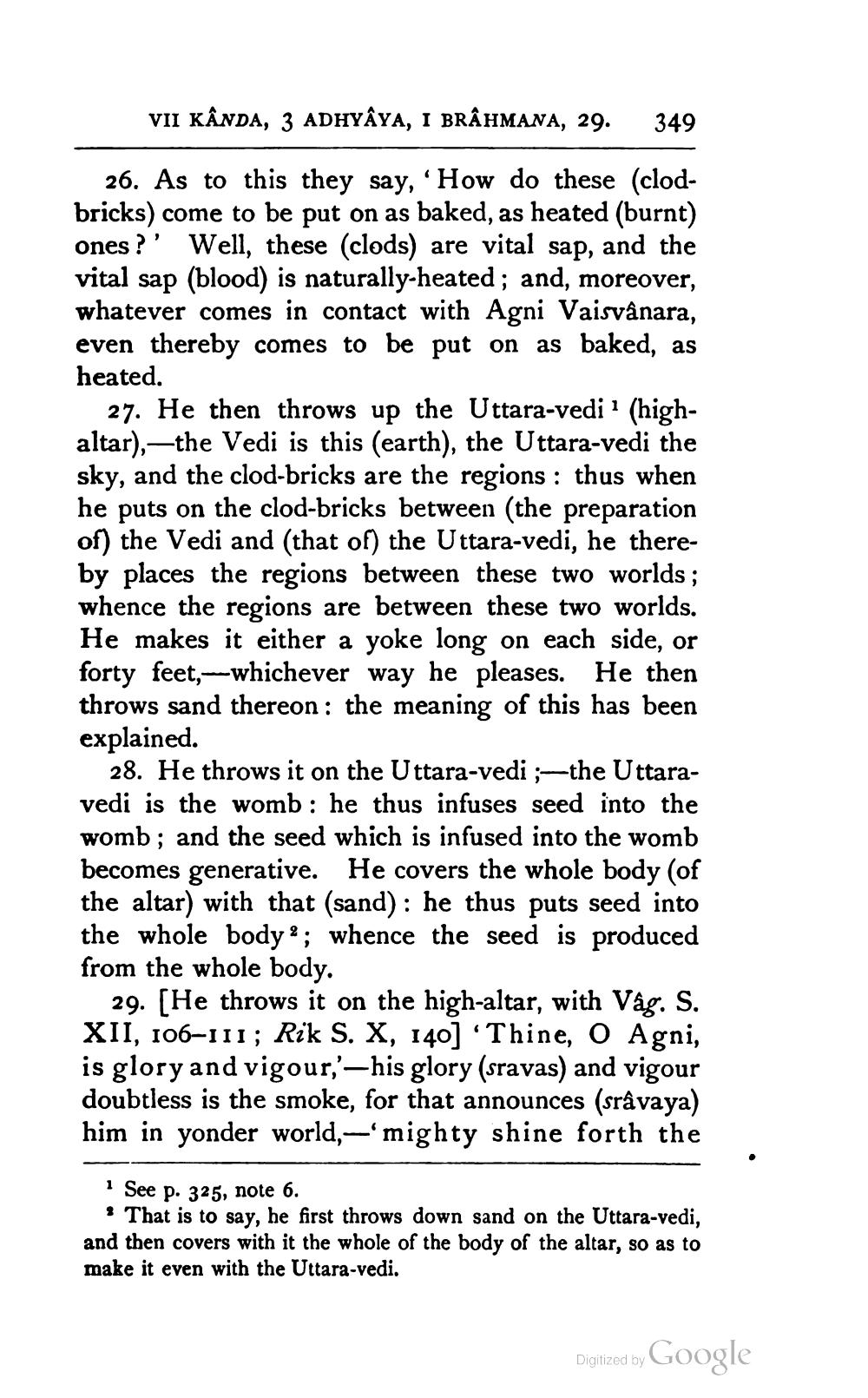________________
VII KÂNDA, 3 ADHYAYA, I BRÂHMANA, 29.
349
26. As to this they say, 'How do these (clodbricks) come to be put on as baked, as heated (burnt) ones?' Well, these (clods) are vital sap, and the vital sap (blood) is naturally-heated; and, moreover, whatever comes in contact with Agni Vaisvânara, even thereby comes to be put on as baked, as heated.
27. He then throws up the Uttara-vedi ? (highaltar),—the Vedi is this (earth), the Uttara-vedi the sky, and the clod-bricks are the regions : thus when he puts on the clod-bricks between the preparation of) the Vedi and (that of) the Uttara-vedi, he thereby places the regions between these two worlds ; whence the regions are between these two worlds. He makes it either a yoke long on each side, or forty feet,—whichever way he pleases. He then throws sand thereon: the meaning of this has been explained.
28. He throws it on the Uttara-vedi ;-the Uttaravedi is the womb : he thus infuses seed into the womb; and the seed which is infused into the womb becomes generative. He covers the whole body (of the altar) with that (sand): he thus puts seed into the whole body ? ; whence the seed is produced from the whole body.
29. (He throws it on the high-altar, with Vâg. S. XII, 106-111; Rik S. X, 140] ‘Thine, O Agni, is glory and vigour,'—his glory (sravas) and vigour doubtless is the smoke, for that announces (srâvaya) him in yonder world, —'mighty shine forth the
See p. 325, note 6. . That is to say, he first throws down sand on the Uttara-vedi, and then covers with it the whole of the body of the altar, so as to make it even with the Uttara-vedi.
Digitized by Google




